#ehealth
Text
MIT Researchers Used Large Language Models to Decode Clinical Health Records in Few Shots

Researchers from MIT employed a potent deep-learning model to extract crucial information from electronic health records that might help with personalized medicine.
The adoption of electronic health records aims to enhance and simplify healthcare. Beyond the purview of clinical trials, the vast quantity of data in these now-digital records might be utilized to address the following very specific questions: What dosage of this drug is appropriate for people of this height and weight? What about individuals who have a certain genetic profile?
Evidently, the majority of the information that may provide the answers to these queries is buried in complicated doctor’s notes. Current methods make it difficult for computers to comprehend these notes; in order to extract information, several machine-learning models must be trained. A time-consuming and expensive procedure, building each model requires domain specialists to categorize large amounts of data. Models created for one hospital also don’t operate well at others.
Continue Reading
31 notes
·
View notes
Text

Zwei Beispiele von Hacks
"Create2"-Funktion von Ethereum missbraucht
Nicht nur das Gesundheitssystem weist in seiner Software Lücken und Fehler auf, auch Banksoftware ist nicht perfekt. Das gilt erst recht für diejenige von Kryptowährungen. Böswillige Akteure haben die "Create2"-Funktion von Ethereum missbraucht, um Sicherheitswarnungen für Wallets zu umgehen und Kryptowährungsadressen zu verändern. Die Folge davon war, der Diebstahl von Kryptowährungen im Wert von 60.000.000 US-Dollar von 99.000 Personen in den letzten 6 Monaten.
Create2 ist ein Code in Ethereum, der das Erstellen von Smart Contracts auf der Blockchain ermöglicht. Eigentlich handelt es sich um ein leistungsstarkes Tool für Ethereum-Entwickler, das fortschrittliche und flexible Vertragsinteraktionen, eine parameterbasierte Vorabberechnung der Vertragsadresse, Flexibilität bei der Bereitstellung sowie die Eignung für Off-Chain-Transaktionen ermöglicht.
Gelingt es Angreifern jedoch die Sicherheitswarnungen der Wallet zu unterdrücken, bzw. zu umgehen, so kann ein Opfer eine böswillige Transaktion unterzeichnen. Dann setzt der Angreifer einen Vertrag an der vorberechneten Adresse ein und überträgt die Vermögenswerte des Opfers dorthin. Shit happens!
Royal ransomware asked 350 victims to pay $275 million
Auch die zweite verlinkte Meldung zeigt ein Beispiel, wo durch unsichere Netzwerke Angreifer Zugriff auf wertvolle Daten bekommen. In diesem Fall handelt es sich sogar um Gesundheitsdaten, allerdings Institutionen des Department of Health and Human Services (HHS) in den USA. FBI und die CISA haben in einer gemeinsamen Mitteilung bekannt gegeben, dass die Royal Ransomware-Bande seit September 2022 in die Netzwerke von mindestens 350 Organisationen weltweit eingedrungen ist.
Danach haben sie mit Ransomware-Operationen, also der Verschlüsselung oder Entführung von Datenbeständen Lösegeldforderungen in Höhe von mehr als 275 Millionen US-Dollar erhoben. Die Forderungen reichen im Eizelfall von 250.000 Dollar bis zu mehreren Millionen Dollar.
Den Behörden in den USA ist es bisher nicht gelungen die Akteure der Angriffe zu enttarnen. Sie konnten jedoch an den Angriffsmustern erkennen, dass um den Jahreswechsel 22/23 ein "Rebranding" stattgefunden haben muss. Während sie anfangs Ransomware-Verschlüsselungsprogramme von anderen Unternehmen wie ALPHV/BlackCat verwendeten, ist die Bande inzwischen dazu übergegangen, eigene Tools einzusetzen. Neuerdings wurde die Malware aktualisiert, um auch Linux-Geräte bei Angriffen auf virtuelle VMware ESXi-Maschinen zu verschlüsseln.
Das Interesse der Hacker an Linux beweist, dass gerade in der Serverlandschaft inzwischen auch bei Unternehmen vermehrt Linux an Stelle von Windows-Servern eingesetzt wird. Das ist gut für Open Source, beweist aber auch, dass auch Linux nicht unfehlbar ist. Der Artikel verweist aber auch daruf, dass oft bei diesen Angriffen der menschliche Faktor den entscheidenden Fehler begeht, in dem Pishing Mails als Einfallstor genutzt werden.
Mehr dazu bei https://www.bleepingcomputer.com/news/security/fbi-royal-ransomware-asked-350-victims-to-pay-275-million/
und https://www.bleepingcomputer.com/news/security/ethereum-feature-abused-to-steal-60-million-from-99k-victims/
Kategorie[21]: Unsere Themen in der Presse Short-Link dieser Seite: a-fsa.de/d/3yc
Link zu dieser Seite: https://www.aktion-freiheitstattangst.org/de/articles/8638-20240102-zwei-beispiele-von-hacks.html
#Cyberwar#Hacking#Trojaner#Verbraucherdatenschutz#Datenschutz#Datensicherheit#Fatenpannen#Pishing#Ransomware#Etherum#Kryptowährung#Gesundheitsdaten#Erpressung#eHealth
2 notes
·
View notes
Link
What is #healthcare 🩺 #AI 🤖🧠?
#HealthcareAI is the application of #ArtificialIntelligence to #MedicalServices and the #administration or delivery of medical services. #MachineLearning (#ML), large and often unstructured #datasets, advanced #sensors, #NaturalLanguageProcessing (#NLP) and #robotics are all being used in a growing number of healthcare sectors.
___💥___The 10 areas of AI applied to Healthcare:
1. Healthcare administration 🧑💼
2. Public health 🏛️
3. Medical research 🔬
4. Medical training 👩🏫
5. Medical professional support 🧑⚕️
6. Patient engagement 😷
7. Remote medicine 💻
8. Diagnostics 🧪
9. Surgery 🥼
10. Hospital care 🏥
#digital#healthcare#digitalhealth#pharmaindustry#digitaltransformation#medicaldeviceindustry#lifescienceindustry#healthcaremanagement#ehealth#digitalhealthcare#commercialexcellencebulletin
2 notes
·
View notes
Text

#can healthy i want you#you are healthy#a healthy alternative#b healthy channel#healthy alternatives#what are healthy habits#health 0k#healthy zone#wb health#w health#z health#health 0#xarvio healthy field#healthy 7.3 powerstroke#ehealth#health ok#health#healthcare#who is healthy#healthy lifestyle who
2 notes
·
View notes
Text
Plus de 300 éditeurs visent le référencement au catalogue de Mon espace santé (DNS)
PARIS (TICsanté) - Exactement 303 éditeurs sont "inscrits dans la démarche et engagés à rejoindre le catalogue de services de Mon espace santé", a fait savoir la délégation au numérique en santé (DNS) par communiqué à la mi-mars.
0 notes
Text
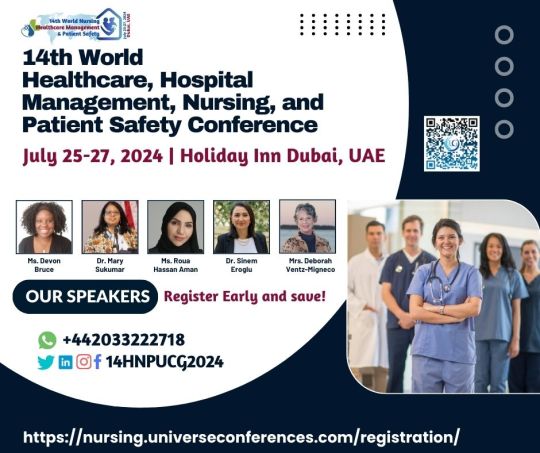
Title: Telemedicine's Role in Improving Healthcare Accessibility
In an era where digital innovations are reshaping every aspect of our lives, healthcare is no exception. Telemedicine, a branch of telehealth, has emerged as a transformative force in the healthcare landscape, offering unprecedented access to medical services regardless of geographical barriers. In this blog post, we'll explore how telemedicine is revolutionizing healthcare accessibility and its impact on patients and healthcare providers alike.
Breaking Down Barriers
One of the most significant advantages of telemedicine is its ability to break down geographical barriers. In remote or underserved areas where access to healthcare facilities is limited, telemedicine bridges the gap between patients and healthcare providers. Through virtual consultations, patients can receive timely medical advice, diagnosis, and even treatment without the need to travel long distances. This is particularly beneficial for individuals with mobility issues, chronic illnesses, or those living in rural areas with limited access to healthcare facilities.
It is with great pleasure that I write this welcome message from UCG. I extend an invitation to all global healthcare leaders, nurses, outstanding scientists, academicians, young researchers, business delegates, and students to join us for the 14th World Healthcare, Hospital Management, Nursing, and Patient Safety Conference, which will take place in Dubai, United Arab Emirates, on July 25–27, 2024.
Convenience and Flexibility
Telemedicine offers unparalleled convenience and flexibility for both patients and healthcare providers. With virtual appointments, patients no longer need to wait for hours in crowded waiting rooms or take time off work to visit a doctor. Instead, they can schedule appointments at their convenience and receive care from the comfort of their homes. Similarly, healthcare providers can conduct virtual consultations from anywhere, allowing them to reach a broader patient population and optimize their time more efficiently.
To submit an Abstract please visit: https://nursing.universeconferences.com/submit-abstract/
Meet Our Keynote-Speakers
Prof. Dr. Robert H. Schiestl: University of Vienna, Austria
Dr. Barry Lachman: President, Lachman Community Development and Consulting Services
Ms. Lori Beth Irvin: Founder and CEO of LBIngenuity
Dr. Minerva kelada: chief medical officer for imperial county medical groups
Dr. Charles Hale: President of Hale Consulting Solutions LLC
Dr. Deborah Ventz-Migneco, PFAC Coach, US
Dr. Mary Suja Sukumar, Anesthesiologist and simulation instructor, US
Enhanced Continuity of Care
Telemedicine plays a vital role in enhancing continuity of care, especially for patients with chronic conditions or complex medical needs. By enabling regular virtual check-ins and remote monitoring, healthcare providers can closely monitor patients' progress, adjust treatment plans as needed, and intervene promptly in case of emergencies. This proactive approach not only improves patient outcomes but also reduces the risk of hospital readmissions and healthcare costs.
To submit an paper please visit: https://nursing.universeconferences.com/submit-abstract/
Improving Access to Specialty Care
In many regions, accessing specialized medical care can be challenging due to limited availability of specialists or long wait times for appointments. Telemedicine bridges this gap by connecting patients with specialists from around the world. Through virtual consultations, patients can seek expert medical advice and treatment recommendations without the need for costly and time-consuming travel. This not only improves patients' access to specialized care but also facilitates collaboration among healthcare professionals, leading to better patient outcomes.
Overcoming Healthcare Disparities
Register your slot As a Speaker/Listener/Poster presenter here: Register here: https://nursing.universeconferences.com/registration/
Telemedicine has the potential to address healthcare disparities by providing equitable access to medical services for all populations, regardless of socioeconomic status or geographic location. By leveraging digital technologies, telemedicine ensures that everyone has access to quality healthcare when and where they need it most. This is especially crucial in addressing disparities in rural and underserved communities, where access to healthcare services is often limited.
Looking Ahead
As technology continues to evolve, the future of telemedicine holds even greater promise for improving healthcare accessibility. Advancements in artificial intelligence, remote monitoring devices, and virtual reality are poised to further enhance the capabilities of telemedicine, making healthcare more personalized, efficient, and accessible than ever before.
In conclusion, telemedicine is revolutionizing healthcare accessibility by breaking down geographical barriers, offering convenience and flexibility, enhancing continuity of care, improving access to specialty care, and addressing healthcare disparities. As we embrace the digital age of healthcare, telemedicine stands as a beacon of hope, ensuring that every individual has access to the medical care they deserve, regardless of where they are located.
Telemedicine encompasses various types of services and applications aimed at delivering healthcare remotely. Here are some common types of telemedicine:
Real-Time Telemedicine: This involves live interactions between patients and healthcare providers using video conferencing, phone calls, or secure messaging platforms. Real-time telemedicine allows for immediate diagnosis, treatment, and consultation without the need for in-person visits.
Store-and-Forward Telemedicine: In this type of telemedicine, patient medical data, such as images, videos, or medical records, are collected and transmitted securely to healthcare providers or specialists for review at a later time. This asynchronous communication method allows for diagnostic evaluations, specialist consultations, and treatment planning without the need for simultaneous interaction.
Remote Patient Monitoring (RPM): Remote patient monitoring involves the use of digital technologies to collect and transmit patient health data, such as vital signs, biometric measurements, or symptoms, from a distance. Healthcare providers can remotely monitor patients' health status in real-time and intervene as necessary, especially for chronic conditions or post-operative care.
Mobile Health (mHealth) Apps: Mobile health apps enable patients to access healthcare services, manage their health data, and communicate with healthcare providers using smartphones or tablets. These apps offer various features, including appointment scheduling, medication reminders, symptom tracking, and teleconsultations, making healthcare more accessible and convenient.
Related Blogs
-----------------------------
1. Blogger: https://nursingconferences1.blogspot.com/2024/02/what-is-digital-health-and-benefits.html
2. Wordpress: https://healthcare844.wordpress.com/2024/02/03/what-is-digital-health-and-benefits/
3. Meduim: https://medium.com/@dr.annetteginkel/what-is-digital-health-and-benefits-9e79773ebe0f
4. Quora: https://qr.ae/pKQmEn
5. Global Health: https://globalhealthtrainingcentre.tghn.org/community/blogs/your_posts/
6. Tumblr: https://www.tumblr.com/nursingucgconferences/741300185611796480/what-are-healthcare-innovations-healthcare?source=share
7. innoget: https://www.innoget.com/innovation-articles/preview/3962
8. mewe: https://mewe.com/nursingucgconference.33
9. Issus: https://issuu.com/ucgnursingconference/docs/track_8_what_is_digital_health.docx
10. Mewe: https://kikoxp.com/posts/37162
11. LinkedIn: https://www.linkedin.com/pulse/track-8-digital-healthcare14nhpucg2024-mwwyc%3FtrackingId
#Conference Details:#Conference Name: 14th World Healthcare#Hospital Management#Nursing#and Patient Safety#Short Name: 14NHPUCG2024#Dates: July 25–27#2024#Venue: Holiday Inn Dubai - Al Barsha Hotel#Email: [email protected]#Visit: https://nursing.universeconferences.com/#Call for Papers: https://nursing.universeconferences.com/submit-abstract/#Register here: https://nursing.universeconferences.com/registration/#WhatsApp us at https://wa.me/442033222718?text=#Telemedicine#HealthcareAccess#VirtualHealth#DigitalHealth#RemoteCare#Telehealth#Telecare#Teleconsultation#OnlineHealthcare#Ehealth#NursingExcellence#PatientSafetyFirst#NurseLife#DHASafeCare#HealthcareQuality#NursingEducation
0 notes
Text
Weighing The Advantages and Disadvantages of eHealth
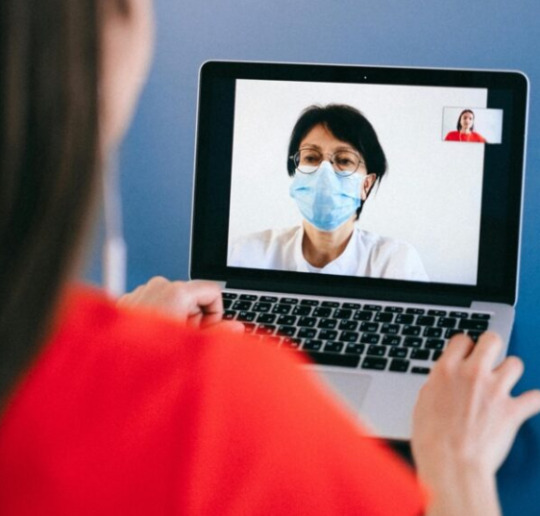
eHealth, or electronic health systems, are becoming increasingly important in the healthcare industry. These digital platforms have various benefits, including increased access to healthcare services, improved communication between patients and healthcare professionals, and more effective management of medical records. However, these advantages come with certain drawbacks, including as worries about data privacy and security, discrepancies in technology access, and challenges with the quality and accuracy of online health information.
eHealth refers to a range of technologies, including electronic health records (EHRs), mHealth, telehealth, and telemedicine. EHRs are digital versions of patients' medical records that healthcare providers can access and update from anywhere. mHealth refers to the use of mobile devices to deliver healthcare services, such as health-management apps and remote conversations with clinicians. Telehealth utilizes video conferencing and other digital technology to provide remote healthcare services, such as interactions with healthcare providers and remote monitoring of patients' health. Telemedicine uses digital technologies to deliver medical care to people in rural or underserved areas.
The COVID-19 pandemic and technology breakthroughs have expedited the evolution of eHealth systems. Despite their benefits, eHealth systems confront issues like as data privacy and security, as well as the requirement for equal access for all patients, regardless of location or socioeconomic background.
0 notes
Text

Track 30: Tele-health/ e-health
Call for Papers: present your paper to the experts and influencers, It provides a forum for you to converse about things that interest you submit your paper at the CME/CPD accredited 15th American Healthcare, Hospital Management, Nursing, and Patient Safety Summit from May 14-16, 2025 in San Francisco, USA.
Submit your abstract/Paper here: re: https://health.universeconferences.com/tele-health-e-health/
#Telehealth #ehealth #HealthInsurance #HealthInfection #PrimaryHealthcare #healthcenters #patientsafety #publichealth #nursing #healthcare #Doctors #healthcareconference #Hospitals #medical #health #Primaryhealth #mentalhealth #digitalhealth
#Telehealth#ehealth#HealthInsurance#HealthInfection#PrimaryHealthcare#healthcenters#patientsafety#publichealth#nursing#healthcare#Doctors#healthcareconference#Hospitals#medical#health#Primaryhealth#mentalhealth#digitalhealth
0 notes
Text
SANTE CONNECTEE : VERS UNE MEDECINE A DEUX VITESSES ?
La transition vers une médecine connectée, propulsée par l’essor des technologies numériques et de l’intelligence artificielle (IA), promet de redéfinir les contours du système de soins, offrant des perspectives novatrices en termes de prévention, diagnostic, et traitement. Cependant, le baromètre 2024 sur la santé connectée, une enquête menée par Ipsos pour EDHEC et Bristol Myers Squibb, met en…
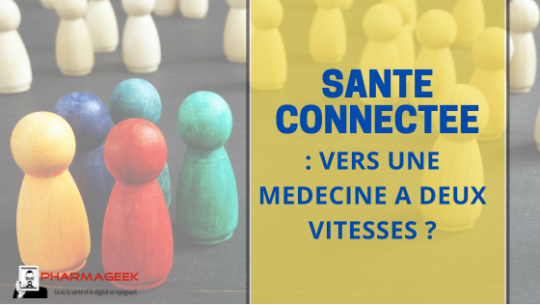
View On WordPress
#digital health#E-santé#ehealth#esanté#hcsmeufr#lionel reichardt#pharma#pharmageek#santé#santé connectée#santé digitale
0 notes
Text
Smartwatch ECG Signals Transformed into Diagnostic Tools for Heart Failure using Artificial Intelligence
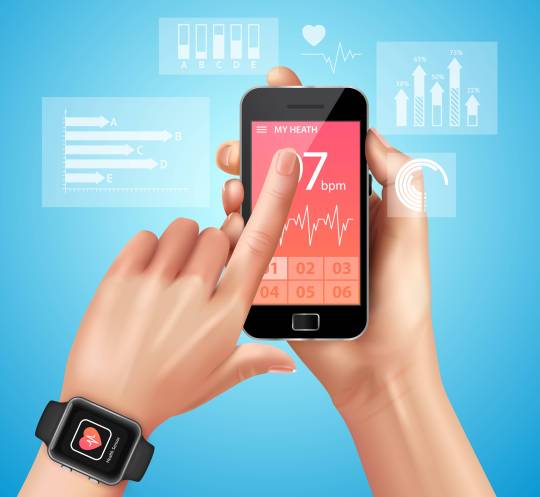
A new study published by researchers at the Mayo Clinic has shown that a smartwatch ECG can accurately detect heart failure in nonclinical environments. This is a significant breakthrough because it shows that heart failure can now be detected earlier and more effectively.
The research published in Nature Medicine reports a couple of health technology advances, which include an app and backend infrastructure that allow patients to share their ECG data from a smartwatch with their clinicians remotely in a secure and easy way, as well as a modified version of a proven 12-lead ECG artificial intelligence algorithm that can now be used to record ECGs on a single-lead watch.
It has been found in the study that consumer smartwatch ECGs can detect patients with cardiac dysfunction, a potentially life-threatening and often asymptomatic condition.
Continue Reading
#bioinformatics#artificial insemination#heart failure#ecg test#ehealth#health tech#mhealth#digital health#scicomm#medcomm#stem
47 notes
·
View notes
Text
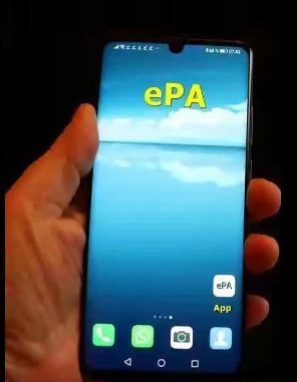
Gesundheitsdaten in Gefahr
Sensible Daten müssen geschützt werden
Vor allem müssen sie möglichst nicht zentral gesammelt werden - am besten ist es natürlich, sie werden gar nicht erst erfasst. Immer wieder lesen wir Kommentare auf unsere Kritik an der elektronischen Patientenakte (ePA), dass es doch gut wäre, wenn man Doppeluntersuchungen vermeiden könnte und jederzeit auf alle für den Patienten erhobenen Daten zugreifen könnte.
Dazu müssen wir leider immer wieder feststellen:
Keine zentrale Datensammlung ist sicher. Das haben auch Hacker insbesondere für Gesundheitsdaten auf dem 37. CCC Kongress wieder unter Beweis gestellt (Gesundheitsdaten nur bedingt sicher ).
Mammut-IT-Projekte kosten Unsummen, bringen nur marginale Ergebnisse und erhöhen die Gefahr für unsere Daten (s. alle Berichte über die mehr als 6 Milliarden Euro für die eGK - eine Plastikkarte mit Foto).
Die für uns maximal zulässige Instanz für eine zentrale Sammlung wäre die eigene Krankenkasse. Hier könnte uns die Politik sogar entgegenkommen, wenn sie statt Hunderter Krankenkassen eine-für-alle schaffen würde, einschließlich der Privatversicherten.
Die Relevanz unserer Gesundheitsdaten für die Forschung nutzt vor allem den Pharmariesen.
Die Pseudonymisierung unserer Daten ist keine Anonymisierung und damit langfristig gefährlich.
Unsere Gesundheitsdaten sind überhaupt nicht relevant, da sie nur von den gesetzlich Versicherten stammen würden. Die Privatversicherten werden wieder einmal privilegiert behandelt.
Das ab heute zwingend gültige eRezept wird sicher nicht ab heute Standard, weil auch die Ärzte es nicht wollen.
Wir lehnen weiterhin jede Zwangsdigitalisierung ab, weil sie für viele das Leben schwerer anstatt leichter macht.
Wir verweisen auf einen offenen Brief, den ein Bündnis aus vierzehn zivilgesellschaftlichen Organisationen und Sicherheitsforscher, darunter CCC ebenso wie der Verbraucherzentrale Bundesverband, unter der Überschrift "Vertrauen lässt sich nicht verordnen" an die Verantwortlichen für unsere Gesundheitspoltik verschickt haben. Sie fordern darin, wie Heise.de berichtet, Korrekturen an den Plänen zur weiteren Digitalisierung des Gesundheitswesens, der Mensch sollte dabei im Zentrum stehen.
Kritisiert wird auch, dass künftig bei der Ausgestaltung des "Gesundheitsdatenraums" das Bundesamt für Sicherheit in der Informationstechnik und der Bundesbeauftragte für Datenschutz und die Informationsfreiheit lediglich "ins Benehmen gesetzt werden" sollen und kein echtes Mitspracherecht haben sollen. Auch die Patienten selbst sollen weitgehend außen vor bleiben. So ist bisher nirgends geplant, ihnen eine Nutzen, z.B. durch individuelle Informationen zu ihrem Gesundheitszustand, zukommen zu lassen, wenn die angeblich so wichtige Forschung mit ihren Gesundheitsdaten (lebens-) wichtige Ergebnisse bringen sollte.
Selbst eine Gemeinwohlorientierung der Forschungsergebnisse aus unseren Gesundheitsdaten ist nirgends festgeschrieben. Auch hier wird stattdessen nur Politik zur Gewinnmaximierung für die Pharmariesen gemacht.
Bei aller Kapitalismuskritik vergessen wir nicht die vielen Datenschutzmängel:
Alle unsere Artikel zu ePA+Datenverlusten https://www.aktion-freiheitstattangst.org/cgi-bin/searchart.pl?suche=ePA+verlust&sel=meta
Mehr dazu bei https://www.heise.de/news/Elektronische-Patientenakte-Zivligesellschaft-und-Sicherheitsforscher-warnen-9572354.html
Kategorie[21]: Unsere Themen in der Presse Short-Link dieser Seite: a-fsa.de/d/3yb
Link zu dieser Seite: https://www.aktion-freiheitstattangst.org/de/articles/8637-20240101-gesundheitsdaten-in-gefahr.html
#eGK#ePA#seconduse#Profit#Forschung#Lücke#Widerspruch#Verbraucherdatenschutz#Datenschutz#Datensicherheit#Freiwilligkeit#Zustimmung#Einwilligungserfordernis#elektronischePatientenakte#CCC#Skandale#RFID#elektronischeGesundheitskarte#eHealth#Zwangsdigitalisierung#Gematik
2 notes
·
View notes
Text
Scrubs and Stadiums
This month’s episode of “News You Can Use” on HealthcareNOWRadio features news from the month of February 2024
News You Can Use with your Hosts Dr Craig Joseph and Dr Nick van Terheyden
The show that gives you a quick insight into the latest news, twists, turns and debacles going on in healthcare withmy friend and co-host Craig Joseph, MD (@CraigJoseph) Chief Medical Officer at Nordic Consulting…

View On WordPress
#AI#Ask Me Anything#Bigdata#Blockchain#ChatBots#connectedhealth#Cybersecurity#Digital Health#DigitalHealth#disruption#education#ehealth#ehrs#EMR#fraud#FutureofHealthcare#futurism#HCIT#Healthcare#Healthcare Reform#healthcarecosts#healthdata#HealthIT#healthtech#HIT#hospitals#Incremental#Incremental Healthcare#IncrementalHealth#Innovation
1 note
·
View note
Text
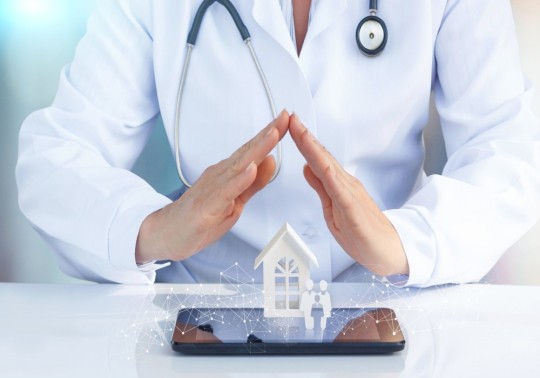
1 note
·
View note
Text
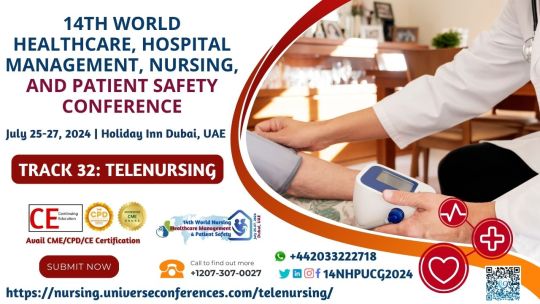
Call For Paper-Track 32: Telenursing
Submit your paper with many more benefits at our upcoming 14th World Healthcare, Hospital Management, Nursing, and Patient Safety Conference from July 25-27, 2024 in Holiday In Dubai, UAE & Virtual!
This is your chance to share your insights, expertise, and vision with a diverse audience eager to learn and engage.
Submit here: https://nursing.universeconferences.com/telenursing/
Abstract Submission Deadline: April 15th, 2024
#Telenursing#Telehealth#RemoteCare#VirtualNurse#Telemedicine#DigitalHealth#NursingTech#Telecare#Telemonitoring#Teleconsultation#HealthTech#Teletriage#TelemedicineNurse#eHealth#RemoteNursing#TelehealthNurse#VirtualHealthcare
0 notes